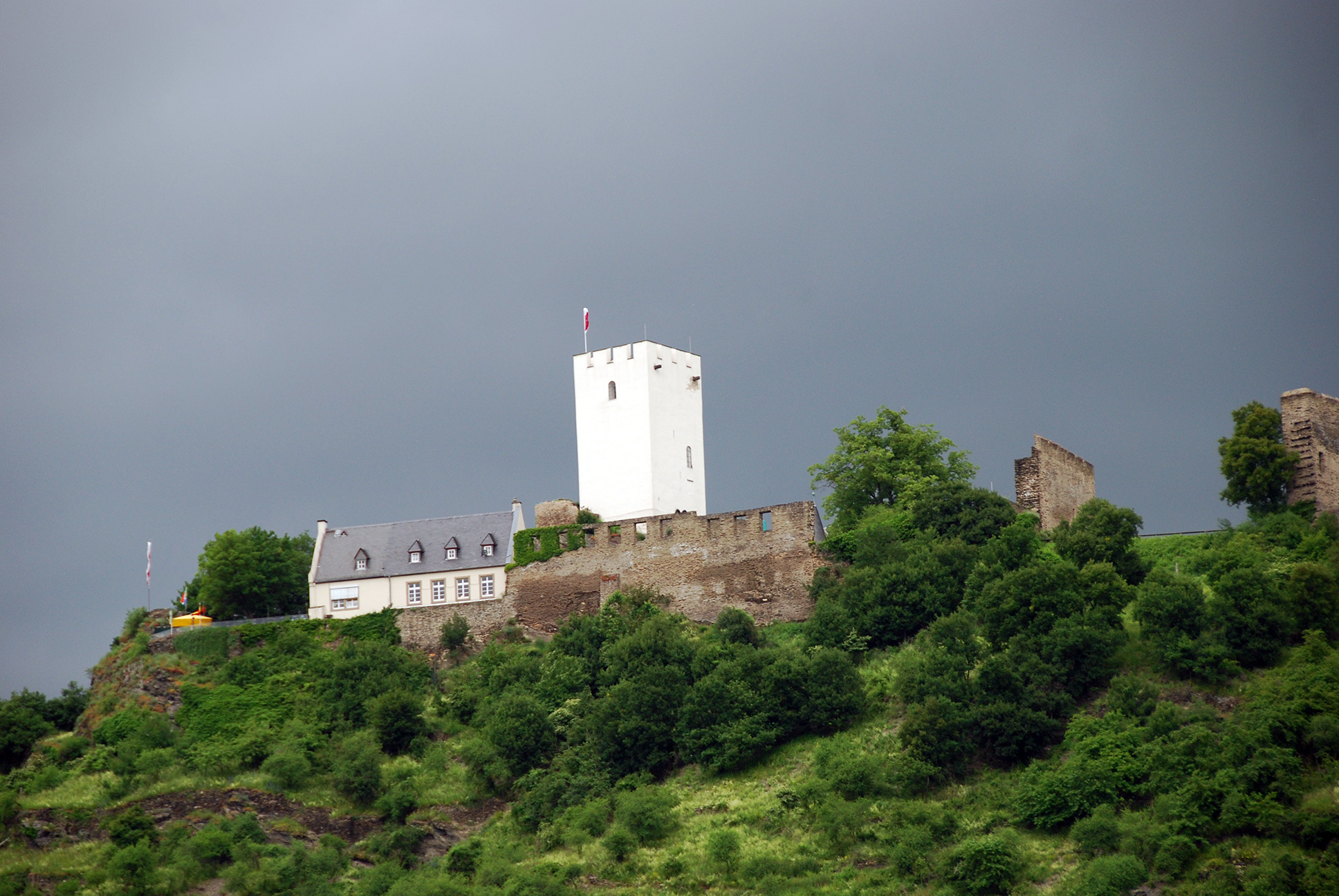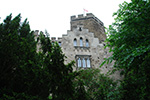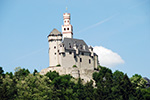History
Burg Sterrenberg was first mentioned in 1190 when it was listed as an imperial fief in the fief book of the imperial ministerial Werner von Bolanden, which included the customs in Bornhofen, granting the Bolandens the right to collect tolls on the River Rhine. The Lords of Bolanden owned the castle until the mid-13th century. The original castle consisted of the keep on a steep rock surrounded by a ring wall. The Bolandens appointed other knights to defend and administer the castle as Burgmannen, or ministeriales.

The Palatinate family of Bolanden died out in 1286, and Burg Sterrenberg was shared between the Counts of Sponheim-Dannenfels and the Counts of Katzenelnbogen until the electoral Prince Balduin, the Archbishop of Trier, came into possession of half of the castle in 1310. Count Diether VI of Katzenelnbogen was still in control of half the castle. As a result, hostilities arose between the Katzenelnbogen and the Archbishop of Trier over who owned the castle, which the Archbishop won in 1315. Later that same year, Diether von Katzenelnbogen was killed in a tournament accident.
Just before that, neighboring Burg Liebenstein was built and subsequently sold by Count Heinrich von Sponheim-Dannenfels to the Lords of Sterrenberg in 1294, who adopted the name "von Liebenstein" and no longer appeared as co-owners of Burg Sterrenbreg. Thus, the rivalry between Burg Sterrenberg and Burg Liebenstein began.
By 1355, Burg Sterrenberg had evolved into the seat of power and center of the Electorate of Trier's estate on the right bank of the Rhine. The inner and outer shield walls were built around this time to provide extra protection and a more formidable barrier between the castle and neighboring Burg Liebenstein.
Further south on the River Rhine, the Electorate of Trier was also building Burg Maus as early as the mid-14th century to protect holdings and as an answer to the Katzenelnbogen castle, Burg Neukatzenelnbogen, or Burg Katz, even further downriver. Burg Maus would quickly become the more critical and strategic castle for the Electorate of Trier and their seat of power, resulting in Burg Sterrenberg's decline.
In 1456, Burg Sterrenberg was already in a dilapidated state and described as derelict and, by 1568, no longer inhabitable. The castle remained in the possession of the Electorate of Trier until 1806, at the end of the Old Kingdom, when it passed to the Dutchy of Nassau. Since 1946, the castle has belonged to the state of Rhineland-Palatinate.
In 1968, reconstruction and repair work began at the castle to restore it to its former glory. Since then, the keep has been restored to its original height, and battlements have been added to the top.
Castle Highlights
Burg Sterrenberg sits majestically above the River Rhine along with its close neighbor Burg Liebenstein. The best views of the castle are from the river. Burg Sterrenberg is considered the oldest preserved castle on the Middle Rhine, with the foundations of the keep, or bergfried, dating from the 12th century. The keep is the most impressive part of the castle, with a height of almost 15 meters.
The castle has two shield walls on the east side, facing toward Burg Liebenstein. The outer shield wall is the more imposing of the two, with a tower-like projection on the right and a crenelated wall as you approach the castle. Burg Sterrenberg also has an inner ward with a few buildings, including the Gothic Ladies' House and, on the Rhine side, a building that now serves as a café and restaurant for visitors.
Burg Sterrenberg can be explored in an hour or two. I recommend combining a visit to Burg Liebenstein, just past the shield wall, or if you want to visit a more substantial castle on the same bank of the River Rhine, head north up the B42 to Braubach and see the Marksburg.
Burg Sterrenberg and Burg Liebenstein are linked by a Rhine Legend.




